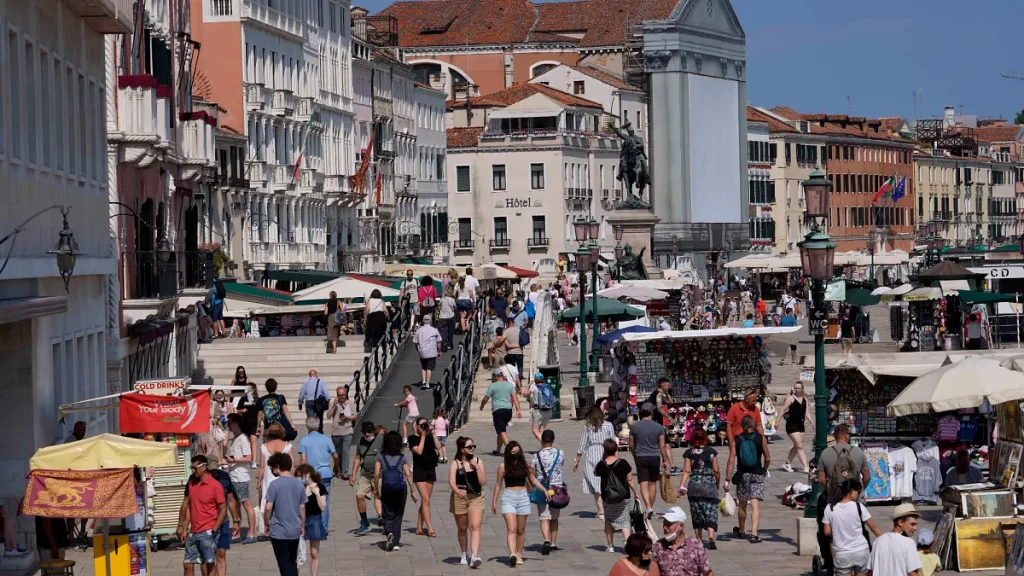The Future of European Tourism: Balancing Growth, Sustainability, and Community
In the vibrant conference halls of the recent Global Tourism Forum, a powerful vision emerged for the future of European tourism. By 2050, European cities are aiming for a harmonious balance between sustainability, economic growth, and social well-being – a significant shift from the current tourism model that many destinations are struggling with. As Eleonora Orso from Eurocities poignantly observed, cities like Venice and Barcelona are experiencing a concerning “monoculturalisation,” where city centers increasingly cater to tourist preferences at the expense of local residents. This transformation isn’t just changing the physical landscape of these historic cities; it’s altering their cultural soul. With Europe welcoming nearly 340 million international tourists in the first half of 2025 – numbers that exceed pre-pandemic levels by 7% – the need for thoughtful management of this growth has never been more urgent. France and Spain continue to lead as top destinations, with projections suggesting Spain might even surpass France by 2034 with an astonishing 3.75 million visitors. But as Patrick Bontinck of visit.brussels emphasized during the forum, the future isn’t about attracting more visitors indiscriminately – it’s about developing strategic approaches that attract the right kind of tourism that aligns with each city’s unique identity and capacity.
The challenges of mass tourism have evolved beyond seasonal headaches to year-round dilemmas for many European destinations. From the canals of Venice to the streets of Barcelona, cities are buckling under the weight of record visitor numbers, creating a cascade of consequences for local communities. Housing markets have become battlegrounds as short-term rentals drive up costs, pushing residents out of neighborhoods their families have inhabited for generations. The protests erupting across Europe aren’t simply knee-jerk reactions to tourist crowds; they represent legitimate concerns about the fundamental right to live affordably in one’s own city. Local authorities from Lisbon to Athens have raised alarm bells about infrastructure strain, increased pollution, and deteriorating quality of life for residents. Sabine Wendt of visitBerlin captured this precarious situation perfectly: “The product in tourism is the destination itself. If we destroy the city socially or environmentally, no one will come anymore.” This profound observation highlights the paradox at the heart of unsustainable tourism – the very features that attract visitors can be destroyed by their presence if not carefully managed. Wendt’s call for shared responsibility among all stakeholders, including tourists themselves, represents a crucial shift in thinking about who bears the burden of creating sustainable tourism models.
The economic dimensions of tourism’s future cannot be overlooked in this complex equation. According to the UN Tourism Confidence Index, high transport and accommodation costs remain the primary challenges affecting international tourism this year. While tourism inflation is expected to decrease slightly from 8% in 2024 to 6.8% in 2025, these rates still significantly exceed the overall inflation rate of 4.3%. This economic pressure creates a difficult balancing act for the industry: how to maintain profitability while addressing sustainability concerns and keeping travel accessible to diverse socioeconomic groups. Economic uncertainty and geopolitical tensions add further complications to travel confidence, creating a climate where reactive, short-term thinking could derail long-term sustainability goals. Industry experts at the forum emphasized that transitioning from mass tourism to more targeted, sustainable models will require collective effort across public and private sectors. José Ramón Bauzá, founder of the Aviation and Tourism Forum and former president of the Balearic Islands, stressed that while each city needs a customized approach reflecting its unique character and challenges, collaboration between government and industry is non-negotiable: “If not, we will lose not only time but money for investors.”
The integration of tourism strategies with broader urban planning emerged as a critical theme throughout the forum discussions. As Eurocities’ Orso articulated, balancing sustainability with profitability requires tourism policies that don’t exist in isolation but are woven into comprehensive urban strategies. “It needs to be part of an integrated urban agenda, related to transport, housing, business support strategies and so on,” she explained. This integrated approach recognizes that tourism doesn’t occur in a vacuum – it interacts with nearly every aspect of urban life, from public transportation networks to housing markets to cultural institutions. When tourism planning happens separately from these other dimensions of urban governance, disconnects inevitably arise, creating the tensions we now see in many European cities. The most successful cities of the future will likely be those that view tourism as one element within a holistic urban ecosystem, using tools like smart destination management systems that monitor capacity limits in real-time and innovative zoning policies that preserve neighborhoods for residents while creating appropriate spaces for visitors.
While individual cities grapple with these challenges, the European Union is preparing to take a more active role in shaping the continent’s tourism future. Though the EU lacks formal competence over tourism policy, the European Commission is developing a common strategy for sustainable tourism expected in early 2026. This initiative aims to transform the sector by addressing several key challenges: tackling overcrowding in popular destinations, promoting environmentally friendly tourism options, improving digital services for travelers, and supporting smoother cross-border travel experiences. The strategy represents an acknowledgment that while tourism remains fundamentally local in its implementation, its challenges often transcend municipal and even national boundaries. A coordinated European approach could provide valuable frameworks, research, and resources to help individual destinations develop their sustainable tourism models. As European cities look toward 2050, their vision for tourism is evolving from a pure numbers game to a more nuanced understanding of tourism’s place within thriving, livable communities. The destination of the future will not be measured by visitor counts alone, but by how well tourism contributes to the environmental sustainability, economic vitality, and social cohesion of the places we love to visit – and that locals are proud to call home.


